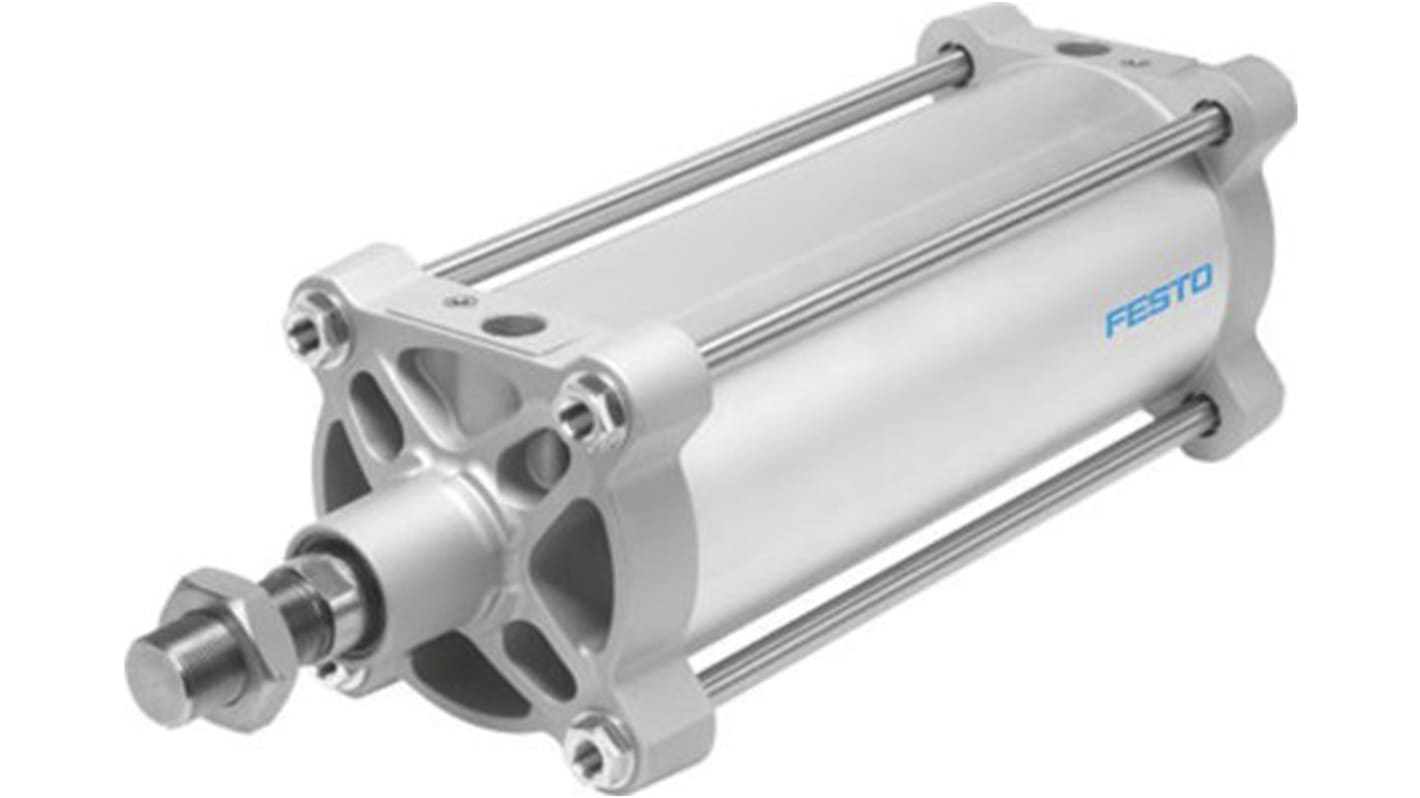Festo Pneumatic Cylinder - 2390150, 200mm Bore, 500mm Stroke, DSBG-200-500-PPVA-N3 Series, Double Acting
- RS Stock No.:
- 203-6468
- Mfr. Part No.:
- DSBG-200-500-PPVA-N3
- Brand:
- Festo

Subtotal (1 unit)*
£1,380.19
(exc. VAT)
£1,656.23
(inc. VAT)
FREE delivery for orders over £50.00
Temporarily out of stock
- Shipping from 12 January 2026
Need more? Click ‘Check delivery dates’ to find extra stock and lead times.
Units | Per unit |
|---|---|
| 1 + | £1,380.19 |
*price indicative
- RS Stock No.:
- 203-6468
- Mfr. Part No.:
- DSBG-200-500-PPVA-N3
- Brand:
- Festo
Specifications
Technical Reference
Legislation and Compliance
Product Details
Find similar products by selecting one or more attributes.
Select all | Attribute | Value |
|---|---|---|
| Brand | Festo | |
| Manufacturer Series | DSBG-200-500-PPVA-N3 | |
| Model Number p | 2390150 | |
| Bore | 200mm | |
| Stroke | 500mm | |
| Action | Double | |
| Pneumatic Connection | G 3/4 | |
| Piston Rod Thread Gender | Male | |
| Cushioning Type | Pneumatic Cushioning | |
| Diameter | 200mm | |
| Maximum Operating Pressure | 10 bar | |
| ISO Standard | 15552 | |
| VDMA Standard | VDMA24364-B1/B2-L | |
| Test Weight | 15493 g | |
| Weight | 15.5kg | |
| Maximum Operating Temperature | +80°C | |
| Minimum Operating Temperature | -20°C | |
| Select all | ||
|---|---|---|
Brand Festo | ||
Manufacturer Series DSBG-200-500-PPVA-N3 | ||
Model Number p 2390150 | ||
Bore 200mm | ||
Stroke 500mm | ||
Action Double | ||
Pneumatic Connection G 3/4 | ||
Piston Rod Thread Gender Male | ||
Cushioning Type Pneumatic Cushioning | ||
Diameter 200mm | ||
Maximum Operating Pressure 10 bar | ||
ISO Standard 15552 | ||
VDMA Standard VDMA24364-B1/B2-L | ||
Test Weight 15493 g | ||
Weight 15.5kg | ||
Maximum Operating Temperature +80°C | ||
Minimum Operating Temperature -20°C | ||
- COO (Country of Origin):
- HU
Festo Pneumatic Cylinder, M36 Piston Rod Thread, 0.6 to 10 Bar Operating Pressure - DSBG-200-500-PPVA-N3
When you need a powerful but lightweight pneumatic cylinder for use in an industrial setting, choose this 200mm bore option from Festo. The double-action operation is fast, strong and energy-efficient, and the unit offers effective control over movement as air moves in both directions. For added control, you can manually fine-tune the degree of damping with an adjustment screw. Thanks to its tie-rod design and improved cover, this is the lightest large-diameter cylinder in its class. It comes complete with PPV cushioning at both ends to prevent overloading.
Features & Benefits
• Wide operating temperature range between -20°C and +80°C for use in challenging environments
• Die-cast aluminium cover delivers high strength without adding much weight
• Die-cast aluminium cover delivers high strength without adding much weight
Applications
• Machine building
• Mining
• Process automation
• Mining
• Process automation
What's the benefit of using a pneumatic cylinder rather than a hydraulic cylinder?
Pneumatic cylinders are cleaner. Since they use air as their operating medium, there's no contamination of the surrounding environment in the event of a leak. Storage requirements for compressed air are also significantly lower than for hydraulic fluids. Since air encounters less resistance than oil, energy loss is lower in a pneumatic cylinder than in a hydraulic alternative.
Related links
- Festo ISO Standard Cylinder - 2537460 500mm Stroke Double Acting
- Festo Pneumatic Cylinder - 1646720 500mm Stroke Double Acting
- Festo Pneumatic Cylinder - 2029473 500mm Stroke Double Acting
- Festo Pneumatic Cylinder - 2159633 500mm Stroke Double Acting
- Festo Pneumatic Cylinder - 1646782 500mm Stroke Double Acting
- Festo Pneumatic Cylinder - 1646812 500mm Stroke Double Acting
- Festo Pneumatic Cylinder - 1646558 500mm Stroke Double Acting
- Festo Pneumatic Cylinder - 1646751 500mm Stroke Double Acting
